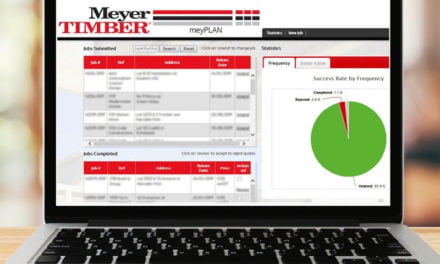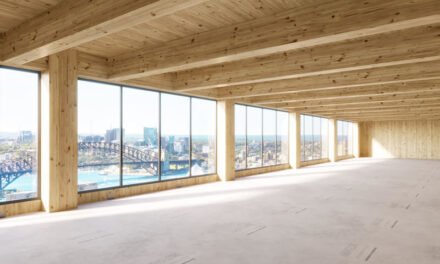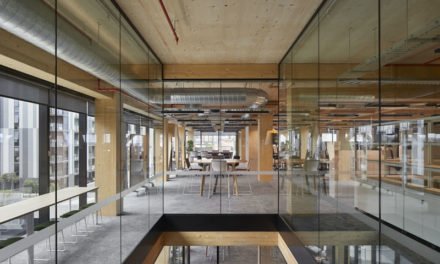CLT Toolbox is about to make life much better for engineers, designers and certifiers working with mass timber.
As an industry, we’re making inroads when it comes to educating the market about the timber’s superiority in areas such as versatility, carbon storage, renewability and durability. And yet timber constructions in Australia are almost exclusively domestic, aside from a handful of ‘hero’ projects built by top-tier companies (eg 25 King in Brisbane and the hybrid Atlassian Tower in Sydney). In between, an enormous part of the market is largely captured by steel and concrete.
Adam Jones, who formerly worked as an engineer at WSP then with WoodSolutions and XLam, has a simple explanation for why this is the case. “We’ve seen demand growing on the architect and client side,” he says. “There’s a real desire to reduce embodied carbon in these buildings and improve sustainability. But when they go out to the engineer, they learn there aren’t many timber specialists in the country, it’s a real bottleneck. A lot of options get lost right there because engineers are trained in and used to using concrete or steel. Those materials are familiar; timber isn’t.”
Jones found the absence of design infrastructure and support for timber to be the “big pressing issue” in his former roles.
“You’ve got the two big problems,” he says. “Engineers have to go out and self-educate, essentially, because timber isn’t taught at university. And, especially when it comes to mass timber, there’s no Australian standard. So they need to hunt around the globe for that information; there’s no single authority telling them ‘this is exactly how you design’.
“That leads to problem number two: they have to build design spreadsheets, which they don’t have to do for concrete or steel and which take a lot of time at considerable expense, especially for those first timber jobs.”
With those problems in mind, Jones wrote a white paper and interviewed a lot of engineers in the industry to really get an understanding of the issues in detail. As a result of that experience, he is now the founder and CEO of CLT Toolbox.
It’s a simple, if enormous, proposition. CLT Toolbox is web-based engineering software that automates the complex structural design computations required in using the suite of mass timber products currently on the market, making it easier and more cost-effective for engineers to design and build with sustainable materials.
“This really eliminates the barriers of adoption for new engineers entering timber for the first time,” says Jones. “It gives them the software tools to design it and to confidently choose timber, as well as delivering a wealth of transparent detail from the supply chain so they can be more open in who they contract with for supply.”
Those suppliers are eager partners, with several assisting the software’s development, as well as contributing to the company’s educational material.
Jones says it’s a natural partnership: “We’ve got the supply chain data from all the major suppliers, because it’s a big issue for everyone – suppliers as well as engineers. They want people to be designing with their materials from the start. Without that information being available upfront, it gets to the drawings stage and it’s a hard scramble to try and figure out how to make it in wood. Our software solves that.”
The goal is for CLT Toolbox to make building mid-rise and above straightforward, in the same way that familiar tools such as AS 1684 and nailplate and timber suppliers’ software packages currently assist with one- and two-storey domestic builds.
And it’s come at an opportune time for the new, expanding and soon-to-launch set of Australian mass timber suppliers: “There’s a lot of new EWP suppliers coming online who need to fill out their factories and their order books,” says Jones.
“This will give power to engineers at the very start to choose within the whole supply chain. At the moment, they’re ‘pushed’ to choose one supplier and go all the way with them. But now with this, they can really have that supply chain competition, which is best for the end user.”
The software package itself is reassuringly familiar for engineers. It provides a series of calculators to design walls, columns, beams and floors. Its beauty comes in the comprehensive data sets, and the simplicity of the next steps – “An engineer can easily use that design to create the drawings and the BIM model and send that information seamlessly into other models,” Jones says.
“If you want to constrain the suppliers to a criterion, that’s easily done, too. A client might just want the best local option, which is totally reasonable. We give that power to them: to choose within the supply chain and not be shoehorned to a single supplier.”
BUILDING THE TEAM
At the time we spoke, the software was undergoing its final months of beta testing before its public launch.
It’s backed by an impressive international team. In addition to Jones (2019’s Future Green Leader of the Year for the GBCA), Ringo Thomas has officially come onboard as the Chief Commercial Officer & Co-Founder of the business. Thomas brings in 10 years experience in software industry, most recently as the head of sales and the first employee at Everest Engineering where he drove the growth of the company to a >250 headcount and over $50 million in sales revenue in under 5 years. Other key members of the team include Ikhsan Agustian, who leads the software team; Lelissie Bedada and Wenderade Beshada, who spearhead the structural design development; Marco Dimitrijevic, who leads Eurocode development; Jack Turner, who heads product design and Ari Yulianto, head of calculation development.
The global team ties in with Jones’s wider mission to remove hurdles in the industry, including in the make-up of his own company.
“Right now, mass timber products are limited to the small number of engineering firms who have the resources and expertise to manage the current complexity,” he says.
“The white paper showed there might only be, say, 30 timber specialists in the country right now, out of 10,000 structural engineers. So it’s very hard to find those engineers and only the big builders can get them. But if we provide the tools for the other 10,000 structural engineers, then pretty much any builder can access a sustainable solution.”
The benefits flow through to other parts of the construction process as well. Currently, building certifiers and checking engineers have the same problem with lack of familiarity using mass timber products.
“The engineer builds a design report that shows the loads and the forces in the building and that it meets wind and earthquake requirements, all those sorts of things,” Jones says. “Then they pass it to a certifier, who usually has a checking engineer and that checking engineer has no idea what they’re looking at.
“Our software helps the structural engineer get their building certification, but it also helps the certifier and the checking engineer review computations as well, from a standardised place and with full transparency. That educational aspect of our work is really important.”
When we spoke in early April, Jones had a set of five engineering firms beta testing the program and was about to expand. “We limited that first set very intentionally so that we could work on their feedback before broadening the testing base,” says Jones. “We’ve had over 30 demos requested from leading engineering firms all over the country and we’re going out to them as regularly as we can and showing them what CLT Toolbox can do. More of those firms will be coming on in the next rounds of testing, which will expand each week.
“We expect the beta program will be two to three months. We want to stress test the software enough that we can feel extremely confident it does what we say it can do in the most efficient way for the end user.”
Jones jokes that like all engineers he is torn between the perfect product and wanting to see it in action.
“Right now we’re aiming to have it fully publicly available as soon as it’s ready. We’re just sequencing the right pace. Being a software product, you want to wait until it’s perfect but, at the same time, we can’t wait to see the difference this is going to make in the real world.”
For more information on the beta testing program or to book a demonstration, visit https://clttoolbox.com.au











